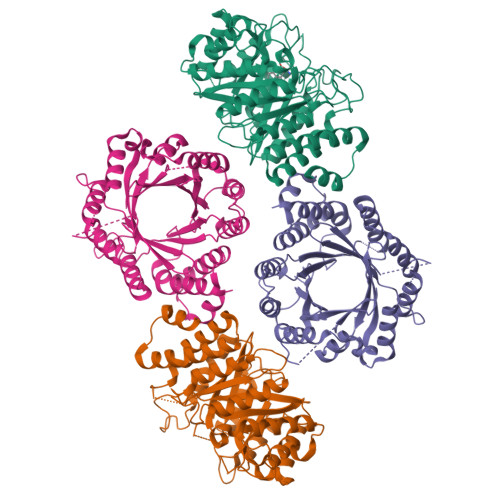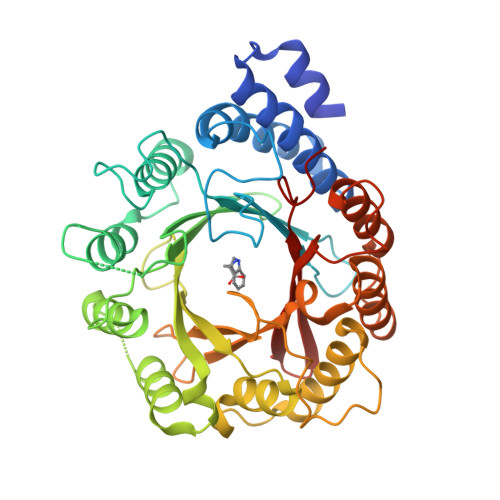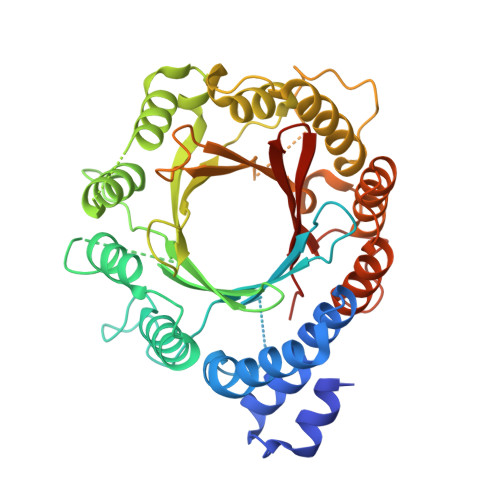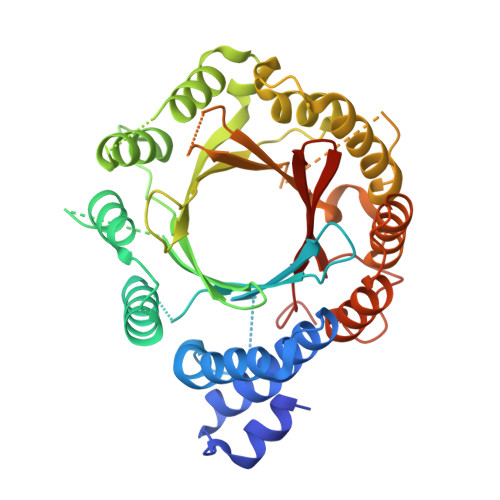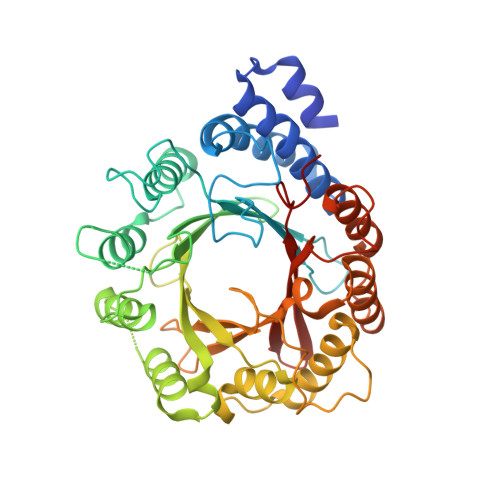Structural Basis of Substrate Promiscuity and Catalysis by the Reverse Prenyltransferase N -Dimethylallyl-l-tryptophan Synthase from Fusarium fujikuroi .
Eaton, S.A., Ronnebaum, T.A., Roose, B.W., Christianson, D.W.(2022) Biochemistry 61: 2025-2035
- PubMed: 36084241
- DOI: https://doi.org/10.1021/acs.biochem.2c00350
- Primary Citation of Related Structures:
8DAY, 8DAZ, 8DB0, 8DB1 - PubMed Abstract:
The regiospecific prenylation of an aromatic amino acid catalyzed by a dimethylallyl-l-tryptophan synthase (DMATS) is a key step in the biosynthesis of many fungal and bacterial natural products. DMATS enzymes share a common "ABBA" fold with divergent active site contours that direct alternative C-C, C-N, and C-O bond-forming trajectories. DMATS1 from Fusarium fujikuroi catalyzes the reverse N-prenylation of l-Trp by generating an allylic carbocation from dimethylallyl diphosphate (DMAPP) that then alkylates the indole nitrogen of l-Trp. DMATS1 stands out among the greater DMATS family because it exhibits unusually broad substrate specificity: it can utilize geranyl diphosphate (GPP) or l-Tyr as an alternative prenyl donor or acceptor, respectively; it can catalyze both forward and reverse prenylation, i.e., at C1 or C3 of DMAPP; and it can catalyze C-N and C-O bond-forming reactions. Here, we report the crystal structures of DMATS1 and its complexes with l-Trp or l-Tyr and unreactive thiolodiphosphate analogues of the prenyl donors DMAPP and GPP. Structures of ternary complexes mimic Michaelis complexes with actual substrates and illuminate active site features that govern prenylation regiochemistry. Comparison with CymD, a bacterial enzyme that catalyzes the reverse N-prenylation of l-Trp with DMAPP, indicates that bacterial and fungal DMATS enzymes share a conserved reaction mechanism. However, the narrower active site contour of CymD enforces narrower substrate specificity. Structure-function relationships established for DMATS enzymes will ultimately inform protein engineering experiments that will broaden the utility of these enzymes as useful tools for synthetic biology.
Organizational Affiliation:
Roy and Diana Vagelos Laboratories, Department of Chemistry, University of Pennsylvania, Philadelphia, Pennsylvania 19104, United States.








